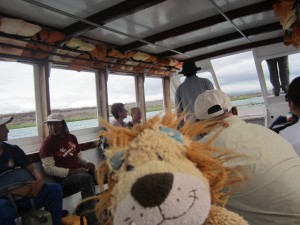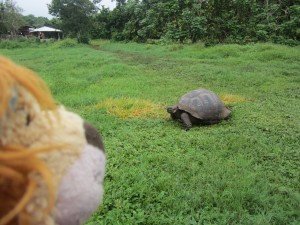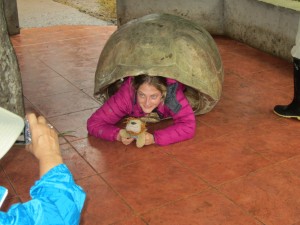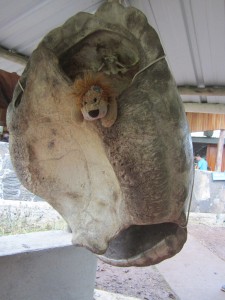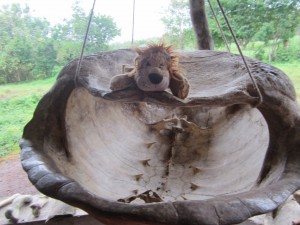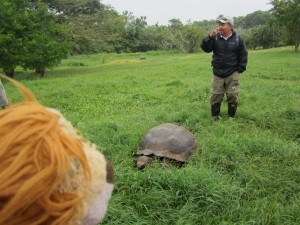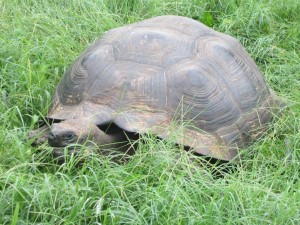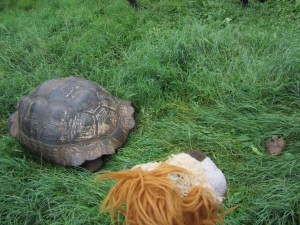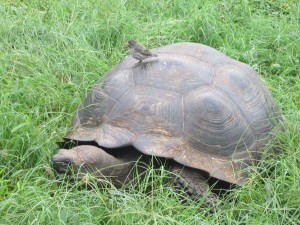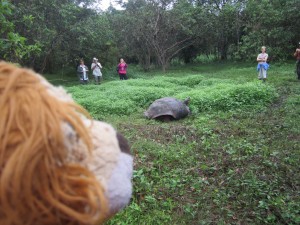So Lewis the Lion couldn’t quite believe it. He’d only just landed in the Galapagos Islands and already he was off to meet some of the most unusual creatures on our planet.
He was going to see some giant tortoises on the Island of Santa Cruz at the Charles Darwin Research Station. The first thing that the visitors needed to do was to swap their shoes and sandals for wellington boots. It was just as well really because the fields that they were about to wander in were very muddy indeed! But before they did quite that, they first came across some enormous shells that had once belonged to some giant tortoises.
They were so big that the tour guide even got Helen and Lewis to crawl right inside one, with their arms and legs poking out of either side! Everybody laughed to see such a sight!
Lewis even sat in one of them himself and couldn’t believe how big it was. Lewis was starting to have an idea of what amazing creatures these giant tortoises are. Firstly they are one of the longest living vertebrates (animals with backbones) on the planet with an average life expectancy of between 100-150 years!
Lewis the Lion wondered what sort of things a tortoise might see over its lifetime? He imagined what he might see if he were to live to 150 years old?!
The centre he was visiting is very special because it is concerned with the conservation of these impressive animals and the preservation of wildlife in the Galapagos Islands. However, just before Lewis the Lion had arrived on the islands, a very famous tortoise called Lonesome George had actually died. He was the symbol of the conservation work carried out on the island over the last 30 years. With his death, it marks the extinction of his species which is very sad news. Read more about this on the Charles Darwin Foundation website.
These giant tortoises can weigh up to 250 kg and can measure 1.3 m in length. Apart from their shell, these reptiles are mainly made up of water.
Lewis the Lion noticed that they seemed to eat a lot of grass in this grassy highland at any rate which is probably why they produced a lot of waste. Lewis the Lion never imagined he would see a giant tortoise’s poo but here it is!
He also noticed that helpful birds would come and eat bugs off their shells.
The shells themselves were beautifully patterned and his guide told him it gave you an indication about its age (a bit like the way a the rings on a tree help to date it). Ivan also told them that you could tell whether it was male or female by the shape of its shell.
If you would like to learn more about giant tortoises on the Galapagos Islands, click this link for a fact file.
Imagine you were a giant tortoise, what sort of things do you think you might see over a 150 year period?
How do you think the world will be different in 150 years time?
Will it have changed for the better or worse?

